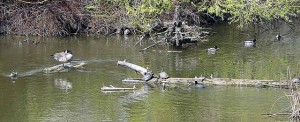Neonicotinoids contaminate Canadian wetlands
A recent study published in the journal PLOS One found that neonicotinoid pesticides—the dominant insecticide used as a seed treatment on crops including canola and soybeans—are contaminating wetlands in Canada’s Prairie Pothole region. Researchers from the University of Saskatchewan used a combination of spatial distribution modeling and assessments of water and sediment concentrations in wetlands across multiple seasons and years to determine the extent of neonicotinoid use and the degree to which it was contaminating the environment. Their results showed that neonicotinoid applications increased between 2009 and 2012, and that by 2012 neonicotinoids were being used across an estimated 11 million hectares. Most wetlands sampled tested positive for at least one neonicotinoid during the study period. Unexpectedly, wetland contamination was common in the spring, prior to the planting of neonicotinoid coated seeds. The authors hypothesize that the observed springtime contamination was due to agricultural runoff from snow melt which carried the insecticides from farm soils into the wetland. These results have serious implications for wetland biodiversity. Previous research has demonstrated that aquatic insects are particularly susceptible to continuous, low-level neonicotinoid exposures, and many larger wetland animals such as birds, frogs, and salamanders are indirectly affected because they rely on aquatic insects for food.


